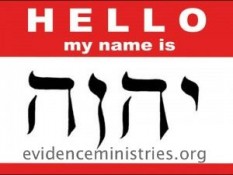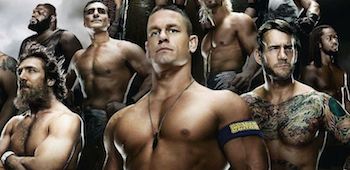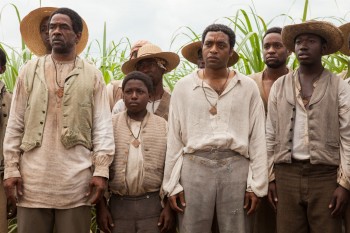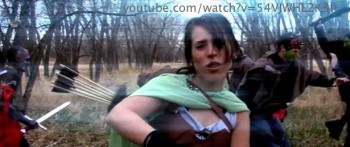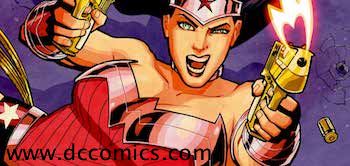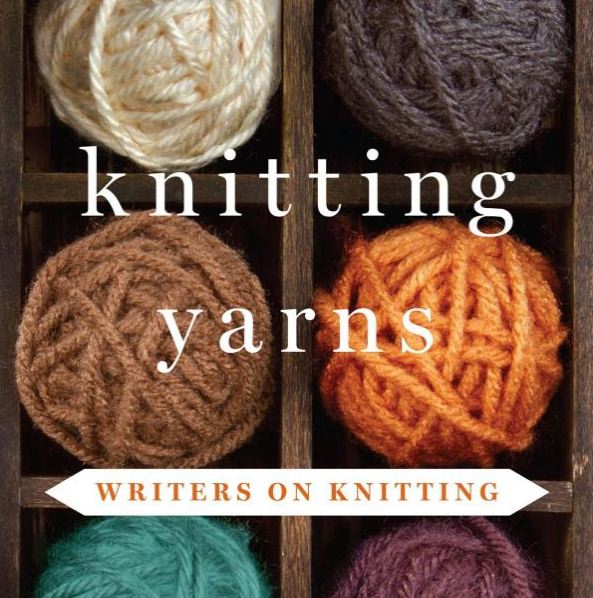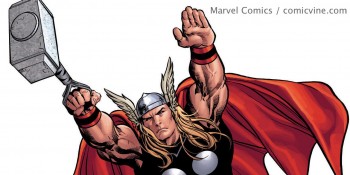Jesus. No other word in our culture packs quite the same punch. Use it (or invoke it, if you will), and the dynamics of a conversation change, one way or another. Sides are drawn, in some cases. Rhetoric and passion bubble up to the surface.
But nobody so much as bats an eyelash if someone starts using the name Joshua. They don’t realize, perhaps, that the man from Nazareth who the Christians revere was called something much closer to the latter than the former.
The name Jesus is an English transcription of a Latin transcription of a Greek transcription of an Aramaic transcription of the Hebrew name Yehoshua. The man himself would have been called Yeshua, which is the Aramaic — the common tongue of the Middle East during the Age of Rome. Doesn’t sound much like Jesus, does it? So how did we get there?
Folk who would have called him Yeshua were using a transcription of a Hebrew word meaning “Yahweh is salvation.” Who’s Yahweh? The Christian god, of course. You thought his name was just “God”? Yeah, so do most Christians.
Anywho, people in the post-Babylonian sunshine belt spoke Aramaic, but they wrote Greek — common Greek, called κοινη (“coin,” eh?), a leftover of the Alexandrian empire that persisted well into the seventh centry, or thereabout. The New Testament of the Bible (“library”) was all written in common Greek, and the spoken “Yeshua” was transcribed into the written Ιησοΰ (“ee yay Sue”).
Around A.D. 400, the upswing of Roman Christendom, Pope Damasus I had the Latin Vulgate (“common,” as in “vulgar”) commissioned. The Vulgate was the Latin translation of all accumulated scriptures, editions of which are still in use today. It was the first Latin version that translated the Old Testament from the Hebrew, rather than from the Greek Septuagint (“seventy”).
Funny story about that: Egyptian king Ptolemy II Philadelphus was said to have put 72 Hebrew scholars in 72 separate rooms and told them each to write the Septuagint, sure that God would make all the translations exactly the same. Of course, whether the translations actually came out the same or were just reported the same so the translators wouldn’t get flayed or whatnot, who can say?
Anyway, the Church used the original Hebrew for the Old Testament and gathered as much material as they could for the New Testament, filtering out all the stuff they didn’t like. Voila, Ιησοΰ was now Iesus (though not Yeezus).
Well, from there, it just takes John Wycliffe in the 15th century translating the first English Bible directly from the Vulgate to go to Jesus. Easy Peasy. Of course, at the time, this version included footnotes in the borders proclaiming anti-Catholic sentiments. The Church, always eager to turn the other cheek, proclaimed him a heretic, burned several of Wycliffe’s followers, and exhumed and burned his corpse as a response.
Back to Yahweh. You’ve probably heard the word Jehovah, from the third Indiana Jones movie if nothing else, where Indy has to walk across the stones marked with letters and he steps on the “J” by mistake and almost falls in. (“Jehovah starts with an ‘I,’ boy!”) Jehovah is the (once again) anglicized version of the Hebrew tetragrammaton (יהוה), or YHWH, approximately. The word’s roots are Canaanite: roughly, “creator of hosts” (meaning armies).
The word Elohim is also used (usually translated as “God”), which sort of means king of the gods, or leader of the gods. That’s right! He used to have his own pantheon, including Asherah (his very own wife) and Baal. I imagine the wife of God must have been pretty overworked most of the time. Anyway, she later filed for divorce and moved to Sumeria.
Yahweh had a brief time as more of a fuzzy, all-thing, animistic deity due to Eastern influences. Then, around the sixth century BC, he was canonized by the Deuteronomist (“lawyer”) priesthood of the Hebrews into being the only god in existence, and all previous scriptural material was either excised or revised accordingly. Bada-boom: Monotheism.
(You may also choose to believe that God was always the same, and Moses wrote the first five books of the Bible, with or without plenary, the direct God’s-mouth-to-scripture-writer’s-hand method … or you can believe both origins at once! It’s a free country.)
So why doesn’t anybody call him Yahweh anymore? After all, the Hindus still call Shiva “Shiva,” and Vishnu “Vishnu.” You see, you may have heard the admonition against taking God’s name in vain. Turns out, that doesn’t mean saying, “God damn it!” or “Jesus Christ!” anytime you smack your thumb with a hammer. No, it means pronouncing the word “Yahweh” aloud, under virtually any circumstances. The Hebrews still scribed the name, but speaking it was forbidden. Leviticus 24:16 states, “He that names the name of Yahweh shall surely be put to death.” Oh. Well, that explains why nobody went around saying it. But why shouldn’t he be named?
Again, harkening to animistic spiritualism, the true name of something, as it were, was believed to give someone power over it. I think that’s true today as well from a cognitive-language perspective, but we’ll save that for another article. Suffice to say, the priests didn’t want people to think they were in control, so they guarded the use of God’s name, well, religiously. Only the high priest ever said the name Yahweh aloud, once per year, at the temple in Jerusalem, in the “holy of holies,” the super-secret shrine in the center of the temple. In the English Bible, the name is replaced with “THE LORD,” in all caps.
Some churches have recently started using the name Yahweh out of respect and the desire to, you know, correctly address their deity. But the Catholic Church and many other sects have decided that they won’t advertise it widely. Whether that’s because they like the idea that “God” almost universally means the Christian god, or because they don’t want to cheese off the Jews by blabbing God’s name around everywhere, or because they maybe don’t want to incur his wrath by being careless, I couldn’t say. Perhaps you could, though, if you’re feeling a little cheeky.
So next time somebody asks if you know Jesus, you can say, “I know his real name, at least.”
